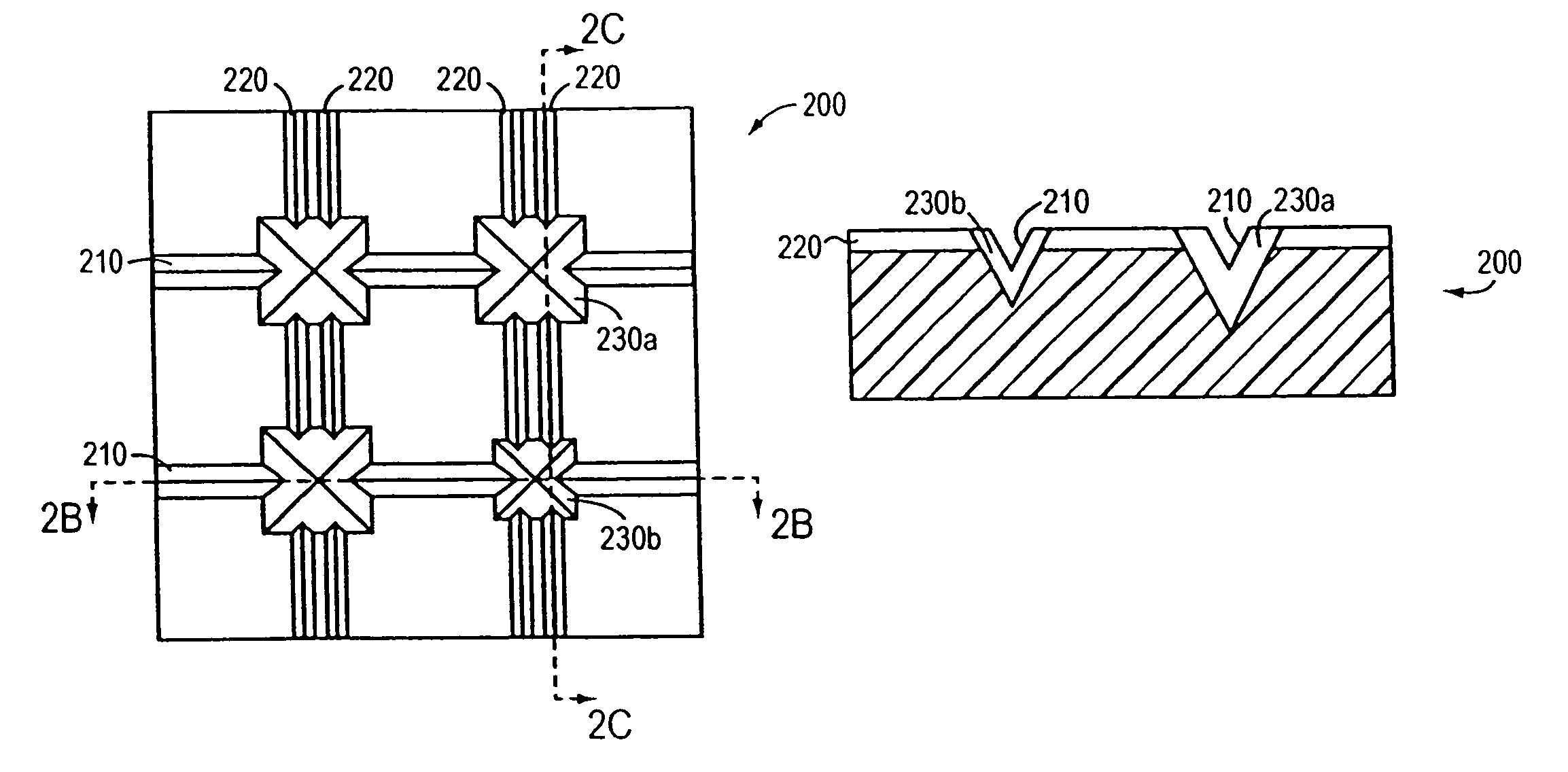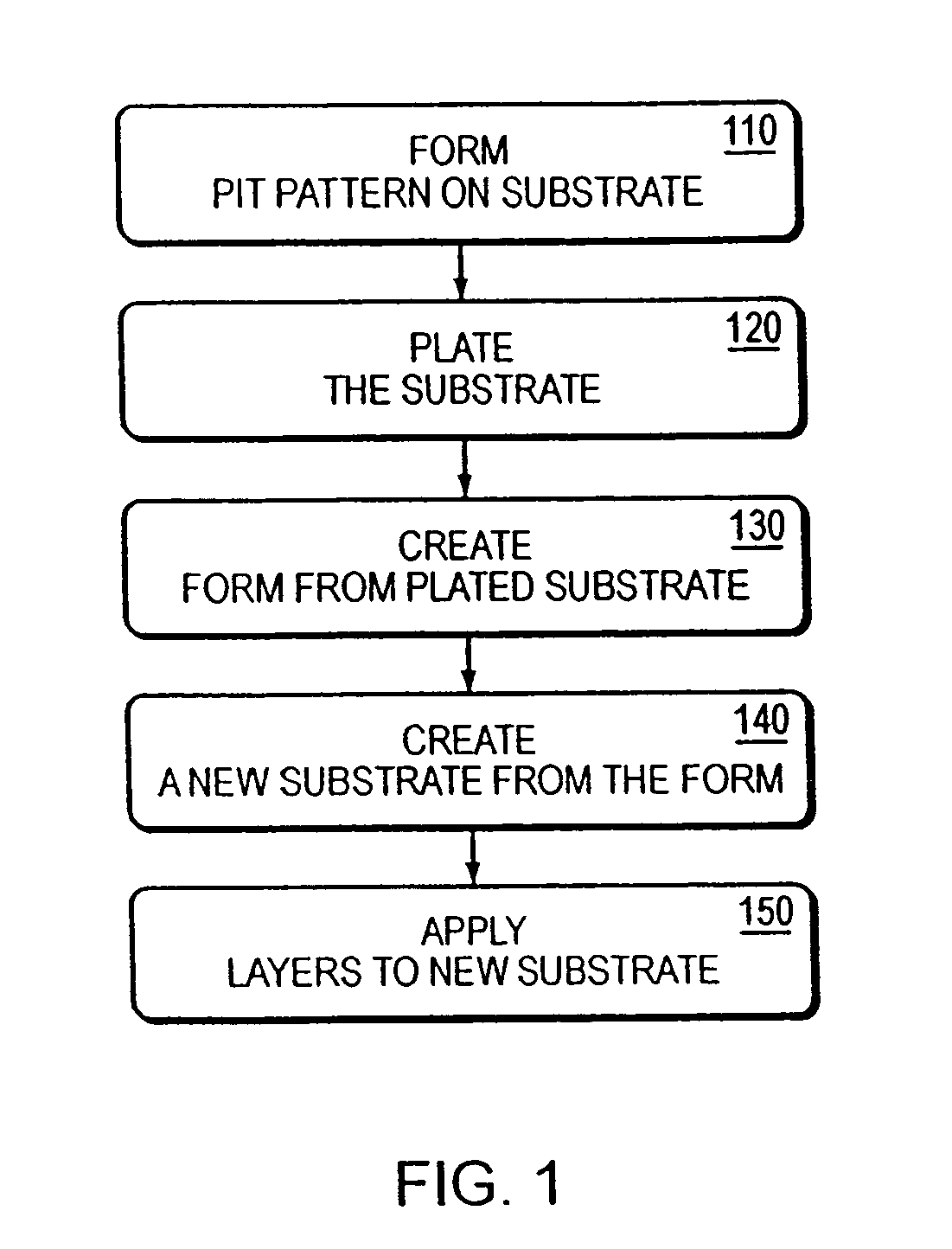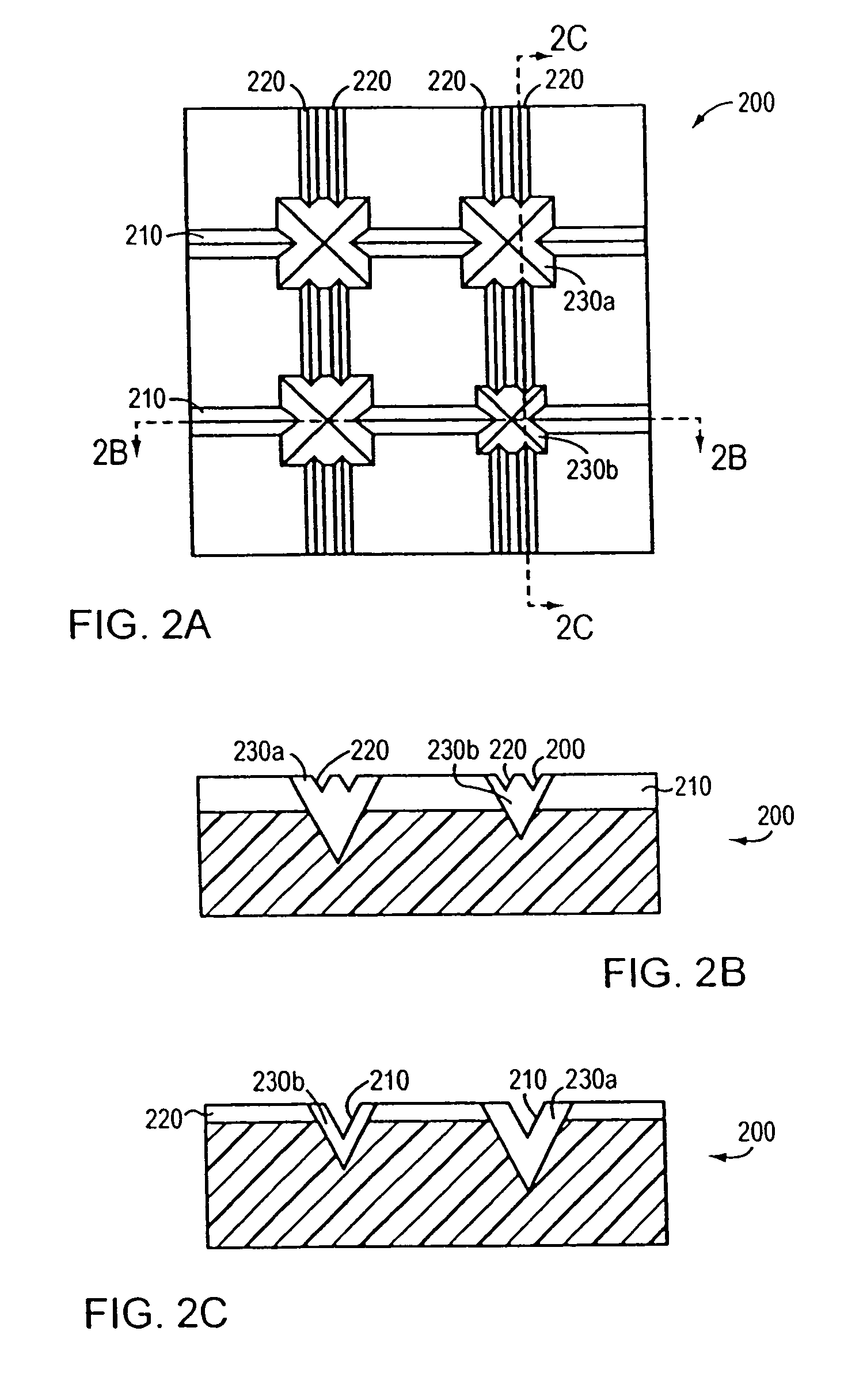Fabrication of semiconductor devices
a technology of semiconductor devices and fabrication methods, applied in semiconductor devices, semiconductor/solid-state device details, electrical apparatus, etc., can solve the problems of increasing fabrication costs, microelectronic device fabrication costs, and use of expensive patterned masks
- Summary
- Abstract
- Description
- Claims
- Application Information
AI Technical Summary
Benefits of technology
Problems solved by technology
Method used
Image
Examples
Embodiment Construction
[0036]Devices in accordance with the invention may be fabricated using a molding process, which obviates the need to etch a recessed pattern into each substrate. Such a process is illustrated in FIG. 1. With reference to FIG. 1, a “master” substrate is etched with the recessed pattern (step 110). This master substrate is then plated (e.g., nickel sputtered) (step 120) in a manner similar to conventional CD and DVD fabrication. The metal-plated master is electroformed to create a form having a raised topology complementary to the recessed pattern of the substrate (step 130). Electroforming is the process of replicating the surface of a master by plating directly over it. A plating material is applied until the desired thickness is achieved. The remaining cavity block is back-filled for strength and then mounted in a frame. In other words, the recesses become raised features. Variations on the electroforming of the master copy could include depositing on that master copy material inte...
PUM
 Login to View More
Login to View More Abstract
Description
Claims
Application Information
 Login to View More
Login to View More - R&D
- Intellectual Property
- Life Sciences
- Materials
- Tech Scout
- Unparalleled Data Quality
- Higher Quality Content
- 60% Fewer Hallucinations
Browse by: Latest US Patents, China's latest patents, Technical Efficacy Thesaurus, Application Domain, Technology Topic, Popular Technical Reports.
© 2025 PatSnap. All rights reserved.Legal|Privacy policy|Modern Slavery Act Transparency Statement|Sitemap|About US| Contact US: help@patsnap.com



